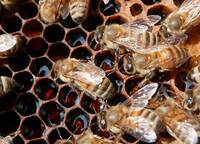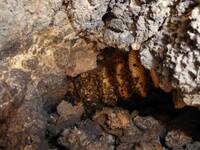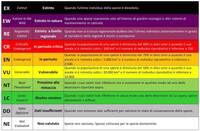PRESS RELEASE
The wild honey bee (Apis mellifera in its feral state) is now officially classified as “Endangered”.
This status was established by the new European Red List of Bees, updated on 12 October by the International Union for Conservation of Nature (IUCN).
The assessment was carried out by a team of 14 European scientists coordinated by the international group Honey Bee Watch, with the participation of the Edmund Mach Foundation (FEM) and its entomologist Paolo Fontana.
FEM made a key contribution through the BeeWild app, which has so far helped identify around 1,300 wild honey bee colonies in Italy. This new classification marks a crucial first step toward advancing future research and, above all, encouraging the European Union to implement conservation measures for wild honey bee populations.
Back in 2014, these populations were classified as “Data Deficient”, a category used when there is insufficient information for a proper assessment. The lack of data had led scientists to assume that wild honey bees had become extinct in Europe — but fortunately, this is not the case. The new evaluation is based on recent data collected by several European research groups that have focused on this topic in recent years.
Italy has played a leading role in the new assessment of the conservation status of wild honey bee populations in Europe, contributing a large amount of solid data on the distribution of feral colonies. Of particular scientific importance are the 1,300 reports collected so far through the BeeWild smartphone application, developed and managed by the Agrometeorology and Irrigation Unit of FEM’s Technology Transfer Centre, in collaboration with the World Biodiversity Association Onlus. The app enables citizens to report and monitor wild honey bee colonies as part of a citizen science initiative, and it remains the only application of its kind operating across Europe.
The significance of wild honey bee colonies was also emphasized in the San Michele all’Adige Charter (2018), which highlighted the need to protect local populations of this essential pollinator species.
This collective document—widely cited in scientific literature—was followed by the creation of the BeeWild app (2020) and, in 2022, by the Pantelleria Declaration, both promoted and supported by the Edmund Mach Foundation.
Another important Italian organization contributing to the reassessment of the wild honey bee’s conservation status is the Resilient Bee Project, which since 2024 has been collaborating with FEM researchers to carry out scientific monitoring of some of the most interesting nesting sites identified through the BeeWild app. Fortunately, Italian beekeepers have quickly recognized the importance of these wild populations and are now among the most active collaborators in research and monitoring projects.



